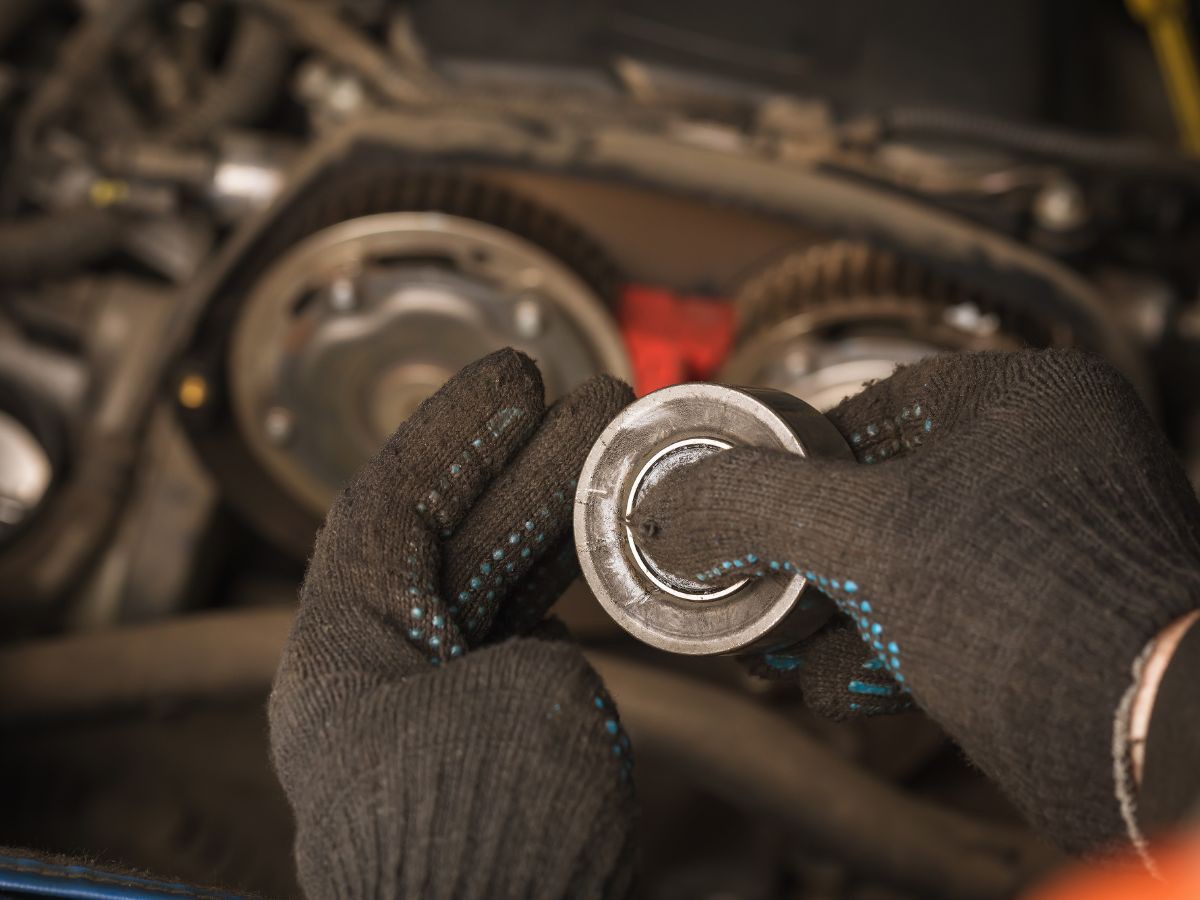
Five Signs Your Timing Belt Tensioner is Faulty
In
most cars, the timing belt is a crucial component of the internal combustion
engine (some have a timing chain). This is in charge of making sure the
camshaft and crankshaft are spinning simultaneously.
In
this manner, the engine's valves will operate according to schedule. The intake
and exhaust strokes of the engine's cylinders should coincide with how the
valves operate.
The
strong rubber and nylon-reinforced cords that make up a timing belt are its two
major components. Numerous pulleys and gears are constantly in touch with the
belt.
The
belt eventually becomes too loose as a result of wear and tear. Because of
this, a timing belt tensioner is employed to keep the belt in place.
It
will essentially be like having a faulty timing belt if the timing belt
tensioner malfunctions because it won't be able to perform its intended job.
Your engine will have a variety of issues as a result, including poor
performance.
You
should be sure to replace your timing belts and chains along with any
tensioners according to the manufacturer's schedule for doing so. In order
to schedule your timing belt kit replacement before it becomes too loose
or breaks, you can search online for vehicle service near me garages. If
the timing belt/chain does snap, in such case, a complete engine replacement is
what you'll probably be looking to do.
Here
are five of the most typical indications that your timing belt tensioner needs
to be replaced. It may be time to change your tensioner if you observe more
than one of these:
1. Check Engine Light
The
timing of the valves will be off if the timing belt is loose as a result of a
defective tensioner, which would trigger the check engine light. The check
engine light will then turn on on the dashboard, indicating that there are
issues with the engine. Since the check engine light by itself can indicate a
myriad of problems, you could use a car diagnostic tool to scan for
any fault codes and validate the problem. Have the engine management light
issue identified and required repairs made before scheduling your next MOT testing service to avoid a failure.
2. Knocking Sounds
The
timing belt will start to knock around and hit the timing cover and other
components inside the timing cover when it becomes loose. If the sound does not
exactly resemble knocking, it can sound more like slapping. If you start to
hear this sound, search online for car services near me garages and book
your car in as soon as you can with a competent mechanic fully diagnose and
repair the issue.
3. Engine Not Turning Over
The camshaft and crankshaft are not synchronised due to a loose timing
belt caused by a broken tensioner. You won't be able to ignite the combustion
of the fuel and air in the chamber as a result. The vehicle won't start when
you turn the key in the ignition, yet the engine might begin to sound.
4. Grinding Noises
The
pulleys themselves will generate grinding or rattling noises if the timing belt
doesn't have a tight grasp on them. This will undoubtedly occur if the pulley
bearing fails.
5. Engine misfires
An
engine misfire is caused when the cylinder's valves open or close too quickly.
If the timing belt is unable to move both the crankshaft and camshaft
simultaneously, this will occur. Check your car's MOT status and repair
this problem before your next MOT test to prevent failing the emissions test.
A Timing Belt Tensioner's Lifespan
The
manufacturer may not have specified a suggested change interval for the
tensioner, unlike the timing belt itself. The timing belt should typically be
replaced between 75,000 and 100,000 miles, and in almost all cases, the timing
belt tensioner should be replaced at the same time.
While
the tensioner's lifespan is really considerably greater than the timing belt's,
you'll save a lot of money in the long run if you replace it together with the
water pump when you change the timing belt. This is because the tensioner is
frequently fairly difficult to access.